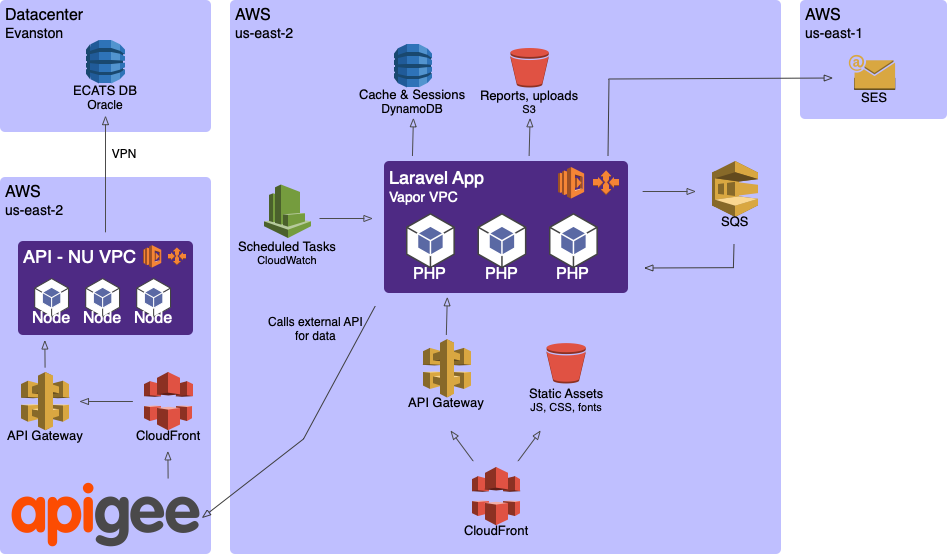Application Patterns
These are case studies for successful application architectures on the cloud. If you are developing a brand new app, one of these cases should get you started off on the right path.
We are making an effort to standardize around a small number stacks & patterns so it is easier for developers to work cross-team. These patterns adhere to our design principles.
| Pattern | Language | Platforms |
|---|---|---|
| Laravel | PHP | On-prem, AWS Serverless |
| ExpressJS | NodeJS | AWS Serverless |
| Spring | Java | AWS Fargate |
These patterns should define their frontend tools, but there is some flexibility based on use-case. Regardless of stack, developers should familiarize themselves with the frontend stack options, because JavaScript is omnipresent.
Infrastructure & MASA Apps
We always want to expose an application's data via an API. This will allow other Northwestern developers to create mashup- or MASA- style applications, aggregating data from several sources to create something tailored to their audience.
For example, a college's IT group may wish to build a homepage aggregating directory information for their faculty plus open faculty positions -- sets of data that traditionally come from very different systems. If both of these systems expose themselves with APIs, it's only a matter of browsing the API Service Registry for appropriate services and getting approval from the data owners.
An increasing number of our own applications follow this pattern. Here is a full infrastructure diagram for applications built this way: on the left is a dedicated API, written in NodeJS, that accesses an on-prem Oracle database. This database is a system-of-record, fully exposed (read & write) through a serverless API.
On the right is a Laravel Vapor app that serves as a UI. It interacts with the database exclusively through the NodeJS API.

All of the services attached to the Laravel app are automatically wired up by Vapor. You do not need to think about setup for any of these services; just use the relevant framework features.
- Firing events or dispatching asynchronous jobs will write data to SQS and trigger additional Lambda executions
- Static assets are automatically deployed to CloudFront & the CDN domain injected into your views
- The cache (which includes Laravel sessions) uses DynamoDB by default
- The scheduler is set up with a CloudWatch scheduled event
- An optional S3 bucket for application data & file uploads can be opted in to from the
vapor.ymlconfig file
In the above example, there is no database for the Laravel UI and only one backing API. This is only done to create a simple diagram. If you want to store your own data or annotate data from another service, add a DB to your Laravel app, or grab data from another API. If you create data mash-ups, you should consider exposing these with your own API built on top of the Laravel app and register them in the API Service Registry for other developers to utilize.